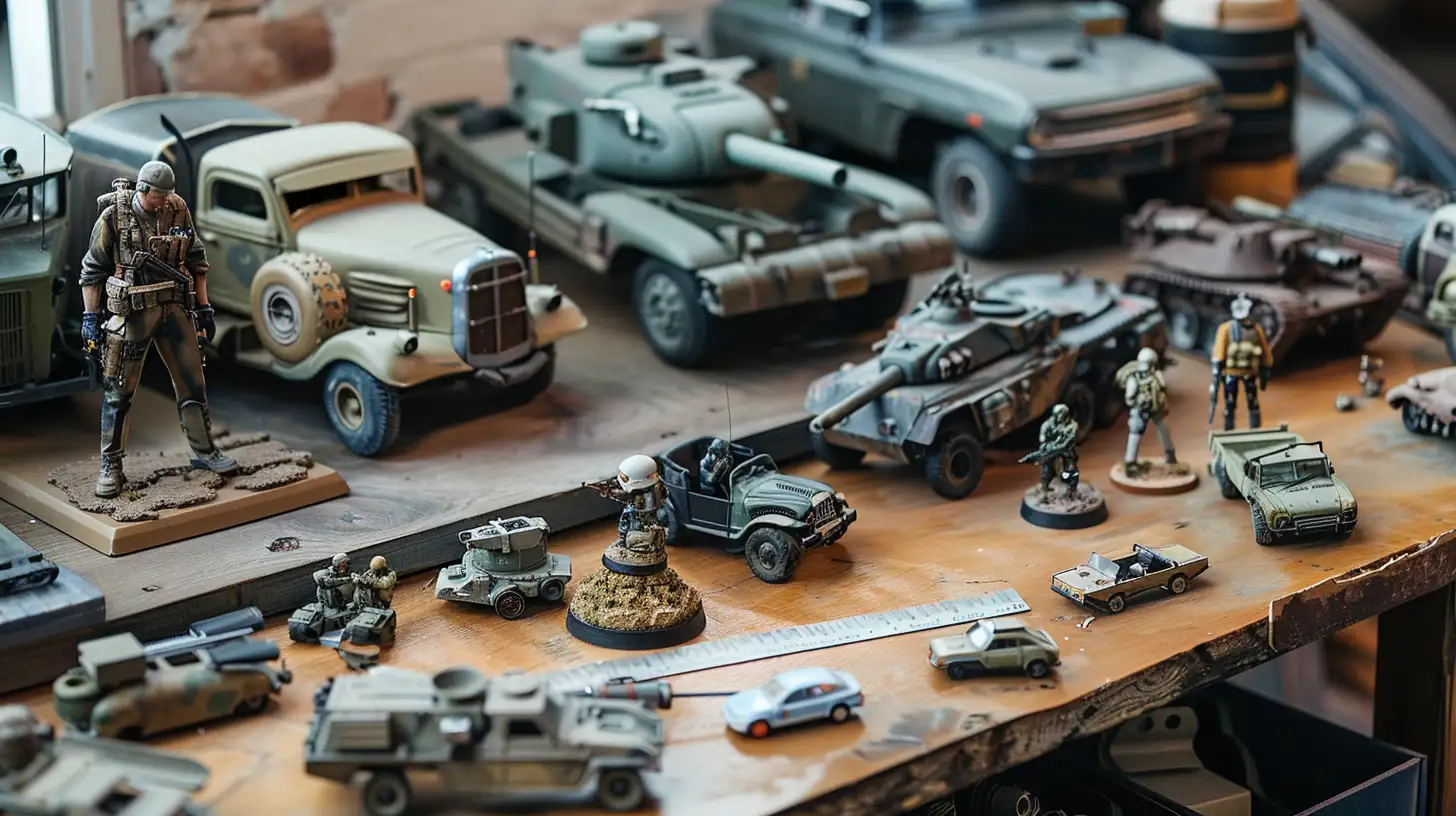
Miniature Scales Sizes: A Guide to Dollhouse Miniature Scales
When you’re venturing into the world of miniatures, understanding scale sizes is crucial. Each scale, from 1:6 to 1:144, offers a unique challenge and level of detail that can significantly impact your project. Whether you’re crafting a dollhouse or a model, selecting the right scale ensures your miniature accurately represents its real-life counterpart. But how do you decide which scale is best for your creation? Understanding different scale sizes helps you create a perfectly proportioned miniature masterpiece based on your vision. Ready to learn more? Let’s dive into the specifics.
Key Takeaways
- Miniature scale sizes range from 1:6 to 1:144, reflecting varying degrees of detail and space efficiency.
- 1:6 scale is highly detailed, with items six times smaller than real life.
- 1:12 scale balances size and detail, making it ideal for realistic miniature homes.
- 1:24 scale offers space-efficient yet detailed miniatures, perfect for smaller projects.
- 1:144 scale demands extraordinary precision, making it perfect for crafting intricate models.
What is Miniature Scale?
Miniature scale is a precise ratio between a miniature object and its full-size counterpart. It is essential for accurately replicating real-life items in smaller proportions.
When delving into model-making, you’ll encounter various scales, with 1:12 being particularly common. This scale means 1 inch on the miniature equals 1 foot in reality, ensuring detailed and proportionate models. Such precision allows you to create lifelike miniature environments, whether for dollhouses, architectural models, or intricate dioramas.
Understanding scale ratios is critical for maintaining consistency and realism in your projects. By mastering these calculations, you can produce miniatures that aren’t only visually appealing but also true to their full-sized originals.
Miniature Scale Sizes
 When exploring miniature scale sizes, you will come across specific classifications. Each scale represents a specific ratio that dictates the level of detail and proportional accuracy of your models. Understanding these variations is essential for maintaining visual consistency and ensuring compatibility across different miniature components.
When exploring miniature scale sizes, you will come across specific classifications. Each scale represents a specific ratio that dictates the level of detail and proportional accuracy of your models. Understanding these variations is essential for maintaining visual consistency and ensuring compatibility across different miniature components.
1:6 Scale (Called Playscale)
Playscale miniatures, often seen in a 1:6 scale, are meticulously crafted to align with fashion dolls. This scale ensures every detail is accurately represented at six times smaller than real life.
In this scale, a standard 7.5-foot door translates to an impressive 15 inches in miniature form. Playscale’s precision allows for intricate accessories, which offer highly detailed play foods and items perfectly suited for fashion dolls.
This larger scale emphasizes realism and detail, making it ideal for collectors and enthusiasts who prioritize accuracy. 1:6 scale miniatures are not very common in regular miniature shops. However, they offer a unique and immersive experience for people who enjoy realistic and detailed representations.
1:12 Scale (Called Dollhouse)
Let’s focus on the 1:12 scale dollhouse miniatures, where 1 inch equals 12 inches in real life. This scale offers a perfect balance between size and detail for creating realistic toy dollhouses.
This 1:12 scale, also known as dollhouse miniature, is favored for its precise, realistic representation. You can achieve incredible detail in your dollhouse, making it a popular choice among collectors and artisans.
The famous Queen Mary’s 1924 dollhouse exemplifies the exquisite craftsmanship possible on this scale. While often pricier due to the level of detail, 1:12 scale miniatures offer unmatched lifelike qualities. It is ideal for creating intricate and realistic miniature scenes.
1:24 Scale (Called Half-Scale)
The 1:24 scale is perfect for miniature enthusiasts who want detailed miniatures in a space-efficient size. This half scale format is perfect if you’re aiming for compact displays without sacrificing realism. In the 1:24 scale, miniatures maintain intricate details, providing a rich visual experience.
Doorways in this scale are typically around 3 to 4 inches high, ensuring proportional accuracy. The compact nature allows you to create elaborate dollhouses and room settings in limited space. This scale is ideal for collectors who appreciate meticulous craftsmanship. Overall, half-scale miniatures are a precise, efficient choice for detailed, space-saving projects.
1:48 Scale (Called Quarter-Scale)
Quarter-scale miniatures, or 1:48 scale, offer a detailed yet challenging realm for model makers. In this scale, a 6-foot person stands merely 1.5 inches tall, requiring precision and patience. Creating intricate components requires precise techniques, especially when working with small sizes. Fine details can be difficult to replicate and are often lost, making skill crucial. The quarter-scale is still popular among hobbyists in North America and the UK, despite the challenges. It is similar to the O scale in model railroading.
Mastering the 1:48 scale can lead to highly rewarding and visually captivating miniature environments.
1:144 Scale (Called Micro-Scale)
Have you ever marveled at the sheer intricacy required to create 1:144 scale miniatures, also known as Micro-Scale Miniatures?
These models, akin to a dollhouse for a doll’s House, demand incredible precision. The 1:144 scale is comparable to the N scale in model railroading, showcasing highly intricate and detailed craftsmanship.
Each component must be meticulously constructed, often making them more expensive than their larger counterparts. Enthusiasts appreciate the charm and challenge of working with these tiny, delicate models.
Despite their minute size, Micro-Scale Miniatures offer a unique visual appeal, capturing a remarkable level of detail and realism. If you’re ready for a rewarding yet demanding endeavor, this scale promises unparalleled satisfaction.
How to Calculate Miniature Scale
To calculate a miniature scale, follow these steps.
Step 1: Measure the original object’s size.
Accurately measuring the original object’s dimensions is the first critical step in calculating its miniature scale. Start by using a precise ruler or measuring tape to determine the original dimensions, focusing on height, width, and depth.
Record these measurements meticulously to ensure accuracy. Consistency in your measurements is vital for achieving the correct scale size. For instance, if the original object measures 24 inches in height, note this exact figure. The precision of these initial measurements directly impacts the final miniature scale.
Step 2: Select a scale factor.
Choosing a scale factor is pivotal in ensuring your miniature models accurately replicate the proportions of their real-life counterparts. The selection of appropriate scale factors determines the size relationship between the miniature and the actual object. This choice is critical for achieving realistic proportions in your models.
When making your scale factor selection, consider the level of detail you desire. A 1:12 scale offers more intricacy than a 1:48 scale. Choosing the right scale factor is crucial to keep your miniature models perfectly in proportion.
Step 3: Divide the original size by the selected scale factor.
Calculating the miniature scale involves dividing the original size of an object by the chosen scale factor. First, measure the original object’s dimensions. Then, apply the scale factor by dividing each measurement.
For instance, if the scale factor is 1:12, dividing the original size by 12 will yield the miniature size. This step ensures you’re replicating the object accurately, maintaining the correct proportions. Precision in this calculation is crucial for creating realistic and cohesive miniature models.
Understand how to adjust the original size using the scale factor. It is vital for creating precise and proportional miniatures, such as for railways or action figures.
Conclusion
In mastering miniature scales, you’ll find that each scale size offers unique challenges and rewards. By understanding precise calculations and scale factors, you can create accurate, detailed miniatures that capture real-world essence.
No matter if you’re working with a 1:6 scale for detailed displays or a 1:144 scale requiring extreme precision, your skill will stand out. So embrace the technicalities, calculate with care, and let your model scales reflect the true proportions of their larger counterparts.
